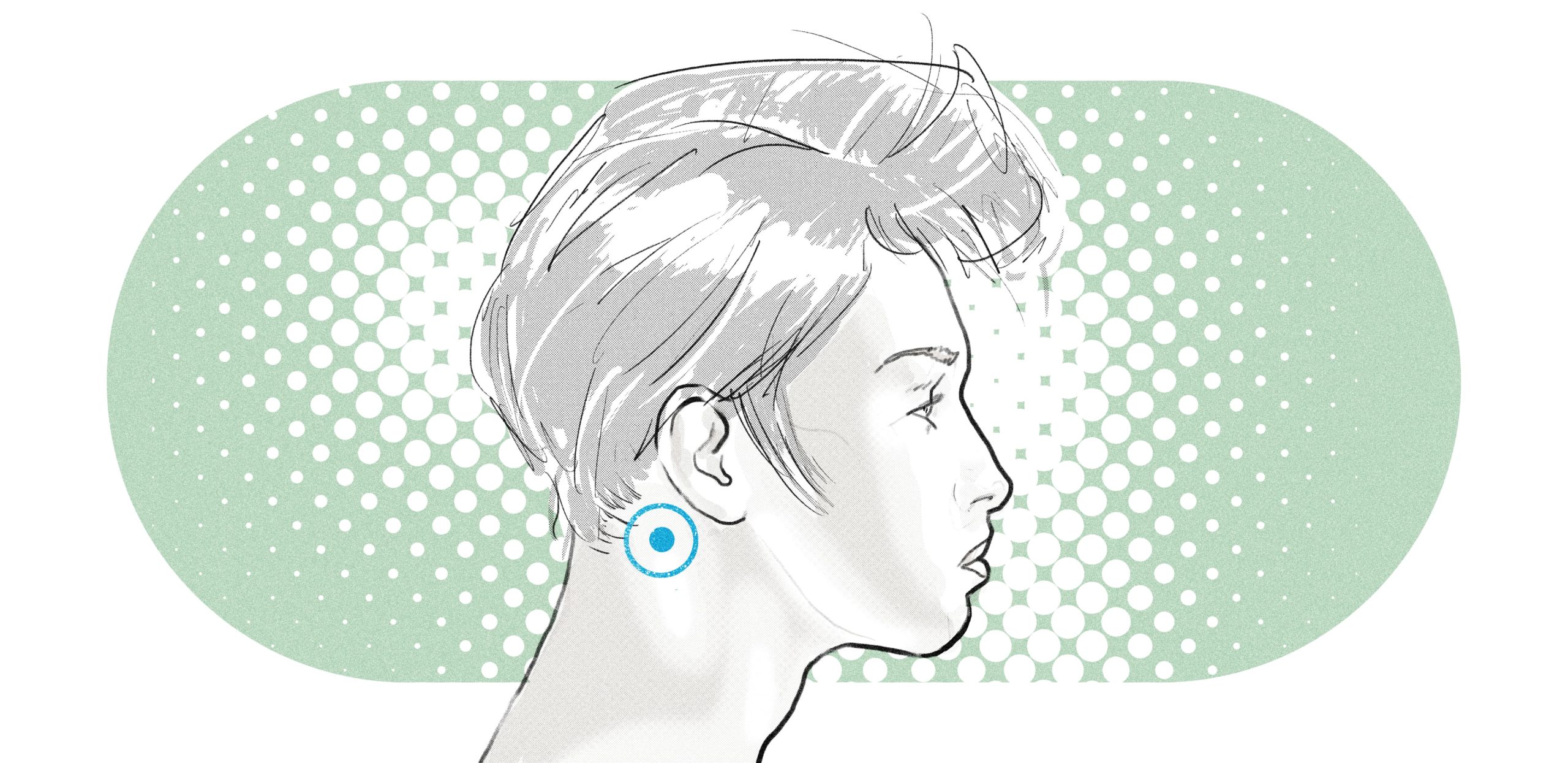Relax your body and mind and drift off more easily with these acupressure points for better sleep.
Sleep is essential for our health and well-being — that doesn’t mean it’s easy to come by. For many, sleep is elusive, so much so that we now have a whole host of supplements, devices, and hacks aimed at helping us snooze. But as it turns out, we’ve had the tools for better sleep all along.
Originally developed in ancient China, acupressure is a wellness practice based on Traditional Chinese Medicine that can be used to achieve quality sleep. Instead of knocking you out (hey, groggy mornings) or distracting your mind, acupressure addresses the core reasons why we can’t sleep — like anxiety, indigestion, or pain.
The therapy works by applying pressure to specific points in your body that TCM practitioners say are along energy meridians — or where energy flows in the body — and it has been shown to have positive impacts on the nervous system and hormonal mechanisms. Of course, it’s always good to talk to your doctor to make sure acupressure is right for you. But when practiced correctly, the technique can be an affordable, easy, self-directed tool for better sleep hygiene.
For most acupressure points, the general rule of thumb is to press or massage the area for 30 seconds with comfortable pressure so you feel some sensation but no pain. Here are the six best acupressure points for blissful, high-quality sleep. Sweet dreams.
Read more: Easy Breathwork Techniques for Better Sleep
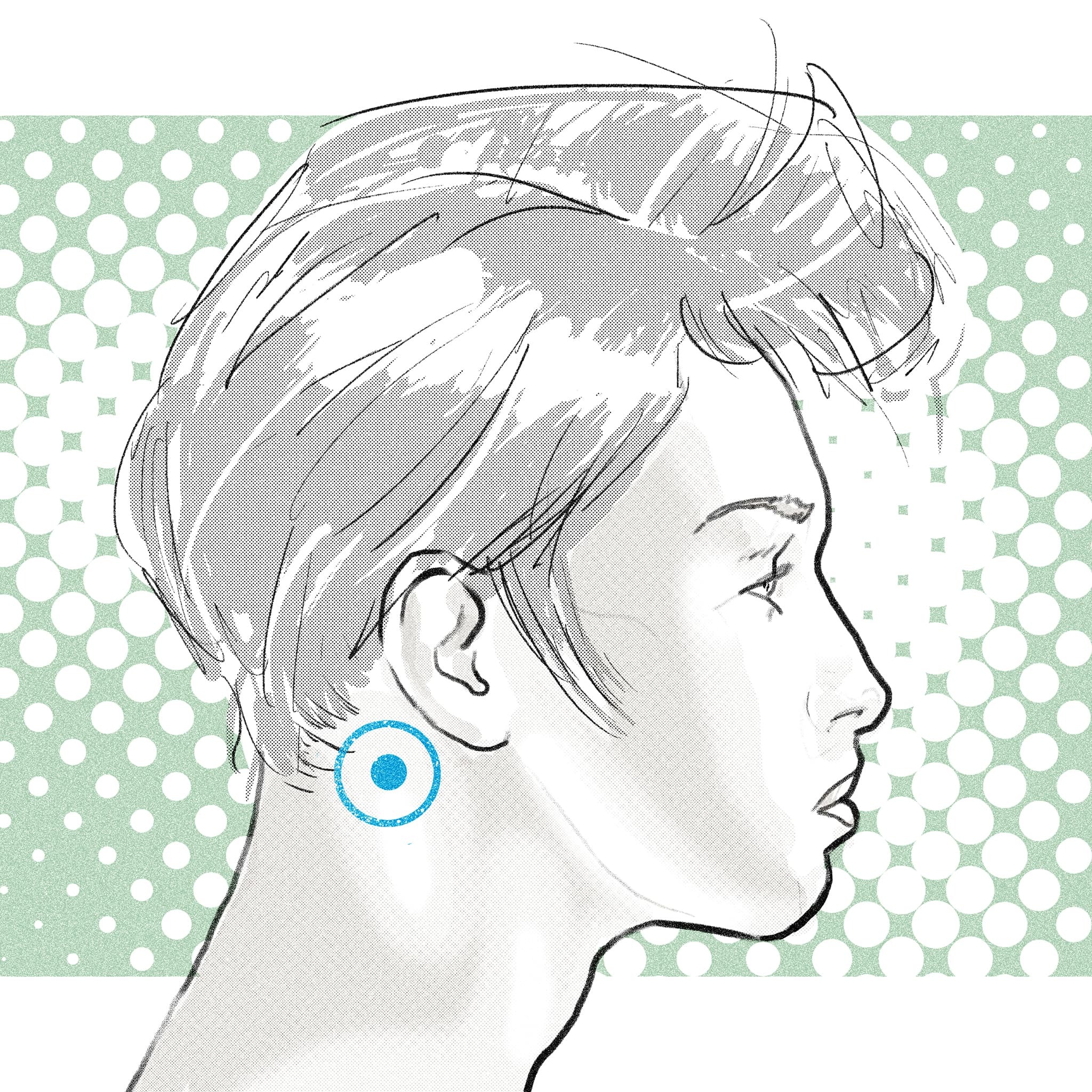 The An Mien point — the phrase translates to peaceful sleep — is located behind and below your ear on either side of your neck. According to Traditional Chinese Medicine, this pressure point is thought to help with insomnia and depression because it’s connected to the Shen, or the mind, and clinical trials support that notion.
The An Mien point — the phrase translates to peaceful sleep — is located behind and below your ear on either side of your neck. According to Traditional Chinese Medicine, this pressure point is thought to help with insomnia and depression because it’s connected to the Shen, or the mind, and clinical trials support that notion.
To find the An Mien, put a finger on your mastoid process, the bony protrusion behind your earlobe, then slide it back into the dip behind the bone. You should feel a little groove here. Lightly press the area in small increments and drift off.
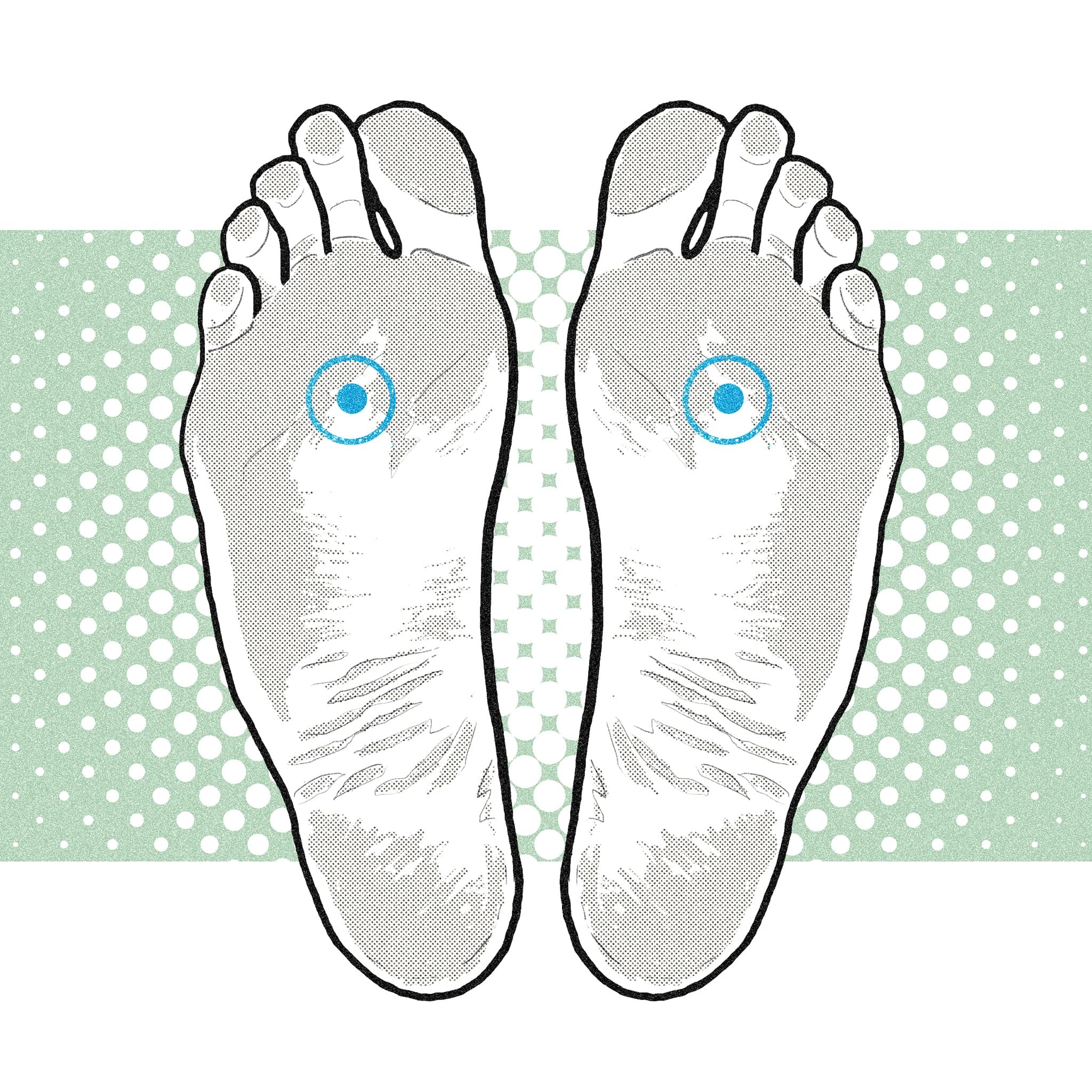 KD1, also known as Yong Quan or Gushing Spring, is a pressure point in the center of the ball of the foot. It’s the first point on the kidney meridian, and it’s thought to control your body’s stress response. Stimulating this pressure point is believed to ground your energy and induce sleep. However, avoid KD1 if you are pregnant, because it can stimulate your uterus. Midwives sometimes use it to help with labor.
KD1, also known as Yong Quan or Gushing Spring, is a pressure point in the center of the ball of the foot. It’s the first point on the kidney meridian, and it’s thought to control your body’s stress response. Stimulating this pressure point is believed to ground your energy and induce sleep. However, avoid KD1 if you are pregnant, because it can stimulate your uterus. Midwives sometimes use it to help with labor.
To access it, find the point at the bottom of the ball of your foot where your big toe mound joins with your foot. Press and hold with both thumbs for 30 seconds on each foot. If reaching your feet is difficult, you can also use a tennis or lacrosse ball to apply pressure.
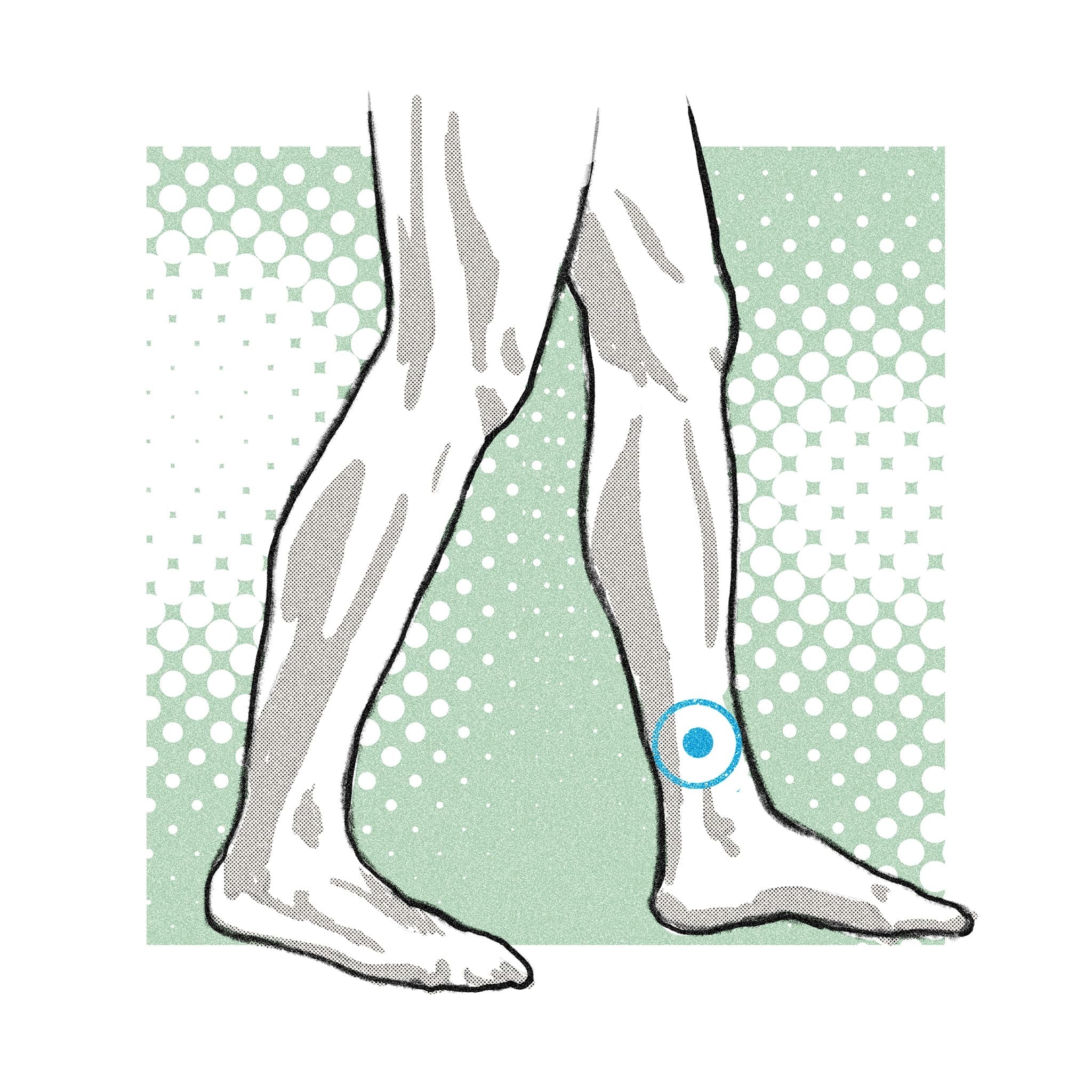 San Yin Jiao, or SP6, which is at the intersection of the spleen, kidney, and liver meridians, is one of the most studied and commonly used acupoints. It can help breast cancer survivors with fatigue and ease pain associated with period cramps. SP6 is also frequently used to help insomnia. In studies, people who targeted this pressure point had longer, better-quality sleep and increased REM sleep.
San Yin Jiao, or SP6, which is at the intersection of the spleen, kidney, and liver meridians, is one of the most studied and commonly used acupoints. It can help breast cancer survivors with fatigue and ease pain associated with period cramps. SP6 is also frequently used to help insomnia. In studies, people who targeted this pressure point had longer, better-quality sleep and increased REM sleep.
This pressure point is located right above the highest point of your ankle bone, and doctors say it’s a good one to access when you’re sleeping on your side because it relaxes the muscles and calms the mind.
Read more: 5 Ayurveda Principles for More Balanced Sleep
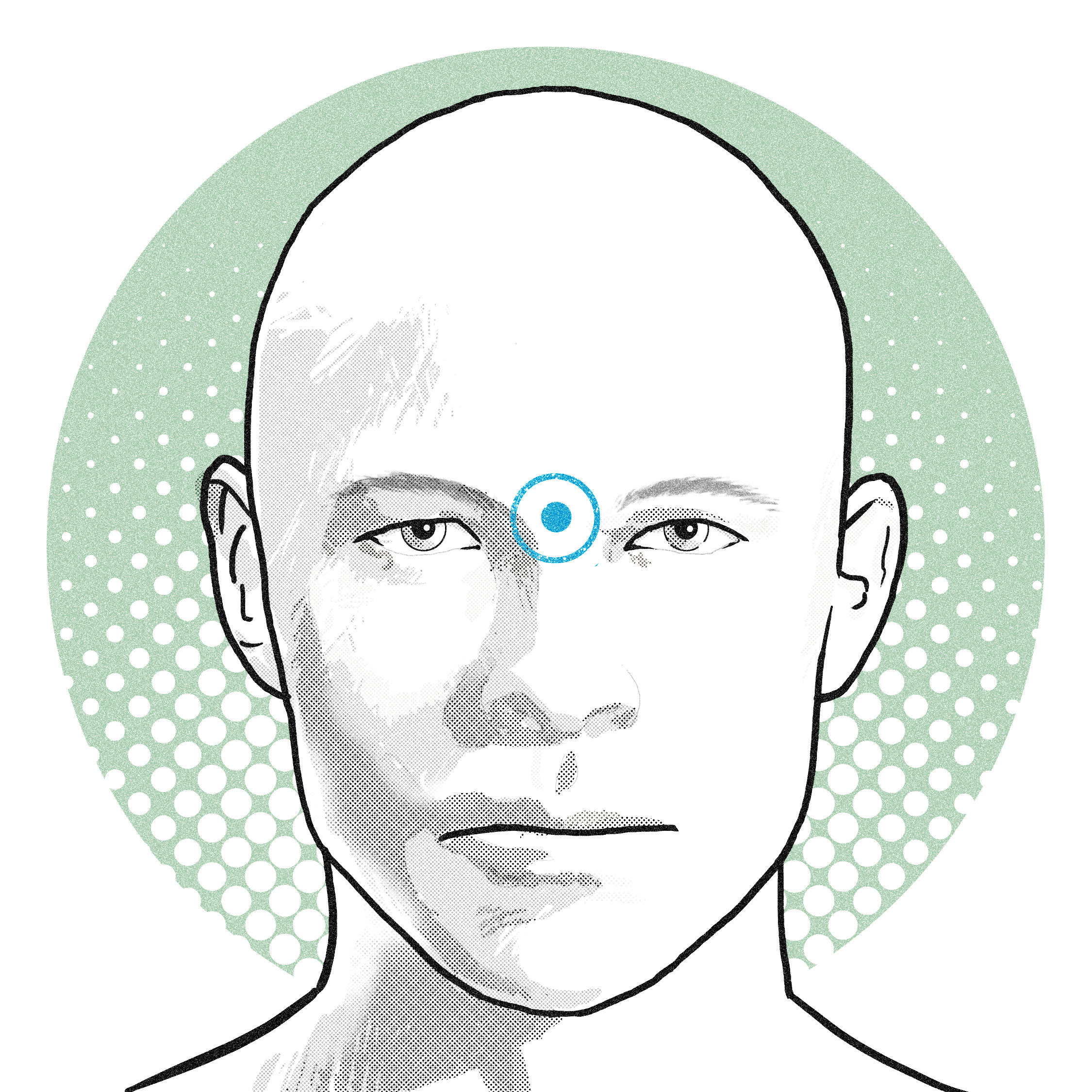 There’s a reason you rub your forehead when you’re stressed. Right in the middle of the forehead, between the eyebrows and just above the nose, is the Yin Tang point. This acupressure point is associated with diminishing fear, anxiety, and cardiovascular stress — all of which help with sleep. In medical studies, applying pressure to the Yin Tang has helped subjects undergoing surgery to manage their worries. And it’s not just used in Traditional Chinese Medicine, either. Yin Tang also shows up in Hindu culture as the third eye, which helps stabilize your mind and your outlook.
There’s a reason you rub your forehead when you’re stressed. Right in the middle of the forehead, between the eyebrows and just above the nose, is the Yin Tang point. This acupressure point is associated with diminishing fear, anxiety, and cardiovascular stress — all of which help with sleep. In medical studies, applying pressure to the Yin Tang has helped subjects undergoing surgery to manage their worries. And it’s not just used in Traditional Chinese Medicine, either. Yin Tang also shows up in Hindu culture as the third eye, which helps stabilize your mind and your outlook.
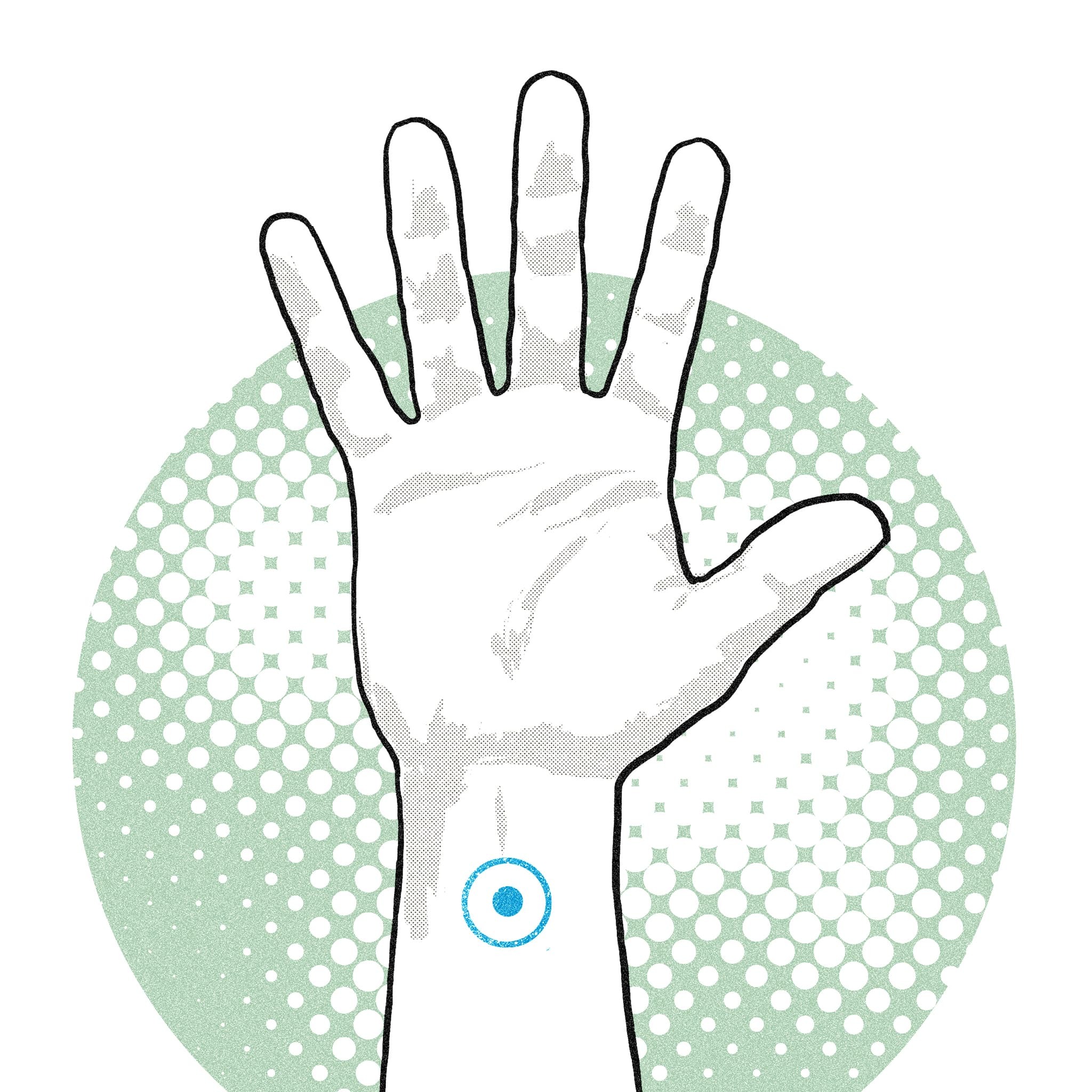 If you’ve ever worn a motion sickness band, you’re familiar with the PC6, also known as the Inner Pass or the Nie Guan. It’s about three fingers away from the crease on your inner wrist, in between the tendons, and it opens up the chest and calms the Shen, or spirit. This pressure point also helps with an upset stomach, so it’s a good one to utilize if that’s what’s keeping you up at night.
If you’ve ever worn a motion sickness band, you’re familiar with the PC6, also known as the Inner Pass or the Nie Guan. It’s about three fingers away from the crease on your inner wrist, in between the tendons, and it opens up the chest and calms the Shen, or spirit. This pressure point also helps with an upset stomach, so it’s a good one to utilize if that’s what’s keeping you up at night.
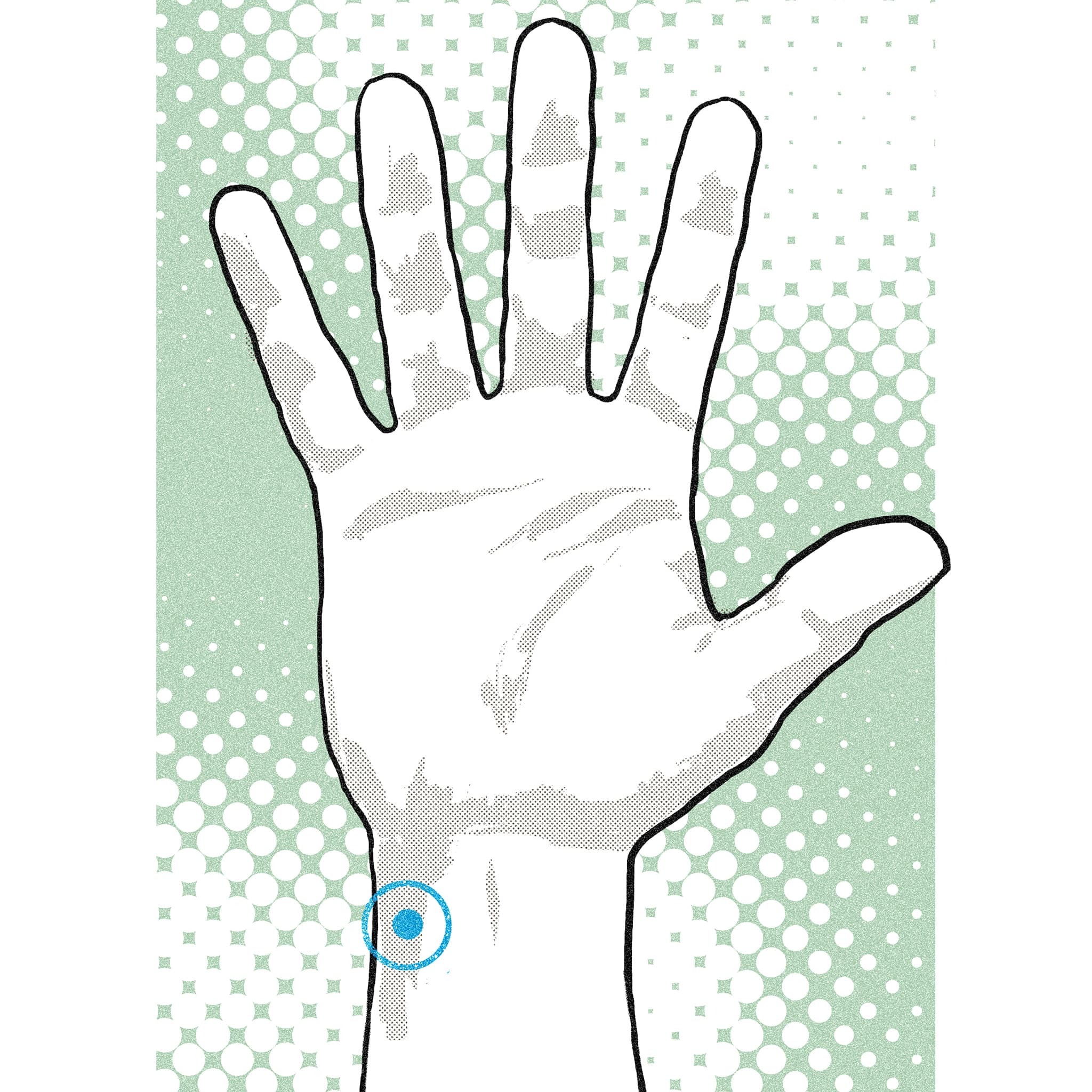 On the other side of your wrist, the HT7 point, which also goes by Spirit Gate or Shen Men, sits on the pinky side, just below your wrist crease. It’s on the heart meridian, and is associated with quieting emotions, a common culprit of restless nights. And because it eases the body and mind, HT7 has been used to help Alzheimer’s patients get much-need slumber. It also relieves pressure on the wrist, so it’s great if you sit at a computer all day or use a mouse a lot.
On the other side of your wrist, the HT7 point, which also goes by Spirit Gate or Shen Men, sits on the pinky side, just below your wrist crease. It’s on the heart meridian, and is associated with quieting emotions, a common culprit of restless nights. And because it eases the body and mind, HT7 has been used to help Alzheimer’s patients get much-need slumber. It also relieves pressure on the wrist, so it’s great if you sit at a computer all day or use a mouse a lot.
Read more: How Sleep Affects Metabolic Health
Have feedback on our story? Email [email protected] to let us know what you think!

Shop Pillows
The Essential Organic Pillow Collection
Gentle, breathable, non-toxic support.




